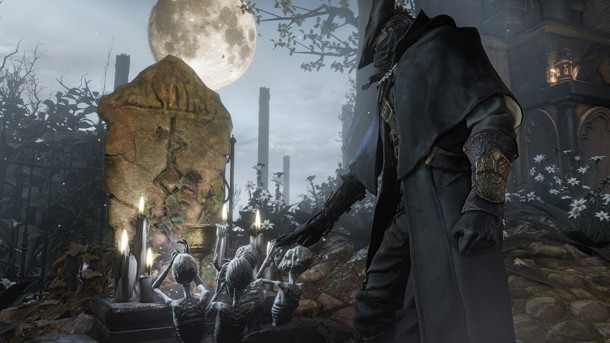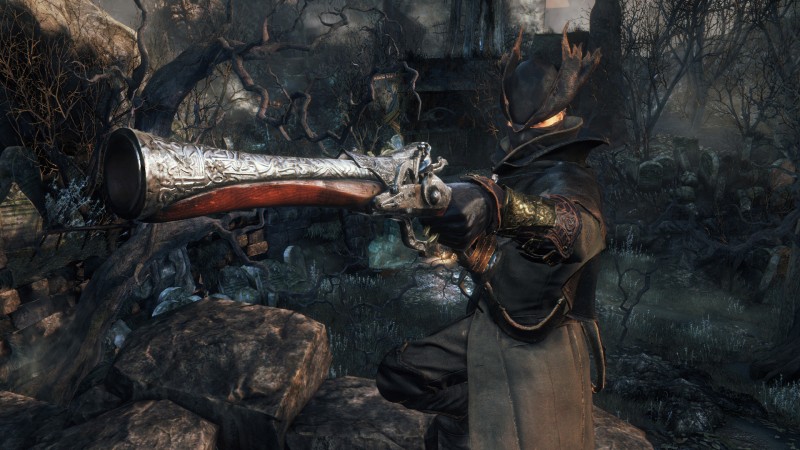Bloodborne: Spoiler-Free Guide For New Players

Bloodborne is finally here. If the Souls games have been hard for you to get into, Bloodborne might be the right fit. Not because it’s easier – it’s not. Those who say it is likely come with a wealth of prior experience with From’s titles, or are those that have been watching streams with overleveled characters tackling early content. However, Bloodborne’s systems are boiled down to be more understandable and there’s really no better time to embrace the systems in place to give you an extra edge if you need it for those boss fights and Chalice Dungeons.
Bloodborne is challenging, but along with white-knuckle encounters comes a sigh of relief and a sense of satisfaction that is difficult to find in other games. This spoiler-free look should offer you some ways you can dive into the abyss, either solo, with newcomers, or with seasoned Souls veterans. If you’re a little lost at some of the terminology used in this guide, check the end of the article for some handy definitions.
You’ll be learning along with everyone else, and that’s one of the best ways to experience this weird and wondrous twisted trek through Bloodborne’s horrific and atmospheric environments. While you have every reason to be terrified (The atmosphere, story, and encounters far surpass survival-horror games in creating tension and dread throughout), you shouldn’t be scared of how the game works. Here are some ways that you can tackle the delicious, depraved journey through nightmares and dreams.
1) If you’re stuck, don’t be afraid to grind out some blood echoes and level up. It might take you some time, but you can absolutely overlevel content, which will give you a serious edge if you find yourself stuck on a boss. You can check out the tip guide for some good farming spots. It may not give you the exact same sense of satisfaction, but you can complete any encounter if you are willing to farm supplies and echoes. Another thing – don’t be afraid to use consumables on bosses! You can always get more if you need them. I suggest doing a “dry run” or two on a boss and then breaking out the Fire Paper or Bolt Paper. Early bosses especially are susceptible to oil and Molotov cocktails.
Another excellent option is to call other players in to help you with various encounters. This costs you a point of insight to ring your beckoning bell, but there are plenty of ways to accumulate massive piles of insight especially through Chalice Dungeons – so don’t be afraid to call in friends or random players to help. While soloing bosses might give you amazing practice and improve your skills, the multiplayer aspects of Bloodborne are a blast to engage in, and there’s nothing much better than taking on an “impossible” boss with friends or other jolly companions.
2) Bloodborne has fewer weapons than Souls games, but they’re highly customizable through blood gems and the fact that many weapons function as two different weapons via the “trick weapon” system. Find a weapon style you like, and stick with it – it’s best to know what kind of focus you desire before you begin if you really want to min-max. For your first go, find a STR or SKL weapon that you want to shoot for. I’d highly recommend the saw cleaver or axe for starting players; the threaded cane is a bit more difficult to use. Special gems that you obtain allow you to augment weapons with things like poison, health regen, more damage, different elemental attacks, and more. Changing gems around won’t cause you to lose gems, so don’t be afraid to experiment. In general, higher-ranked gems are the ones you want to use.
You can pick up all kinds of other weapons later, but you’re going to want one that “scales” with where you’re putting in your points – look for ratings on weapons. E, D, C, B, A, and S are ranks for how the weapon scales with the related stat, and often these will rise as you fortify the weapon with blood echoes and shards. ALWAYS keep your primary weapon upgraded, and you should be able to find plenty of extra shards to play around with a few other weapons too.

3) How does level structure work? In general, you’re faced with large areas that have one central lamp (checkpoint) and many different shortcuts that lead back to that lamp in various ways. You should proceed carefully through a zone the first time, checking for various items nestled away behind statues and handling most enemies that come at you. After unlocking a checkpoint or two and discovering the boss area, often the best way to do “boss attempts” is simply to run with your full load of supplies via shortcuts right to the boss without fighting anything so you’re full and fresh for the encounter.
4) How do you level up and get new gear? You’ll need to acquire your first point of insight (Hint: encounter, but not necessarily defeat, a boss in the first area) in order to use the doll in the Hunter’s Dream to level up. Each level requires more echoes than the last. If you’re not entirely sure what to put points into (but you should at least get the correct points to use your weapons), vitality is always a good choice. If you’re just getting ready to take on the first bosses, getting some levels and a full set of armor from the Hunter’s Dream shop is a good idea. Also, make sure to upgrade your weapon with shards! Over the course of the game, as you defeat certain bosses and NPC hunters, you’ll acquire new badges that will unlock new weapons, armor, and other purchasable items at the messenger baths in Hunter’s Dream. There are two baths: the standard one that allows you to purchase items with echoes and another bath just above that on the side of the house that sells special items for insight points (this one won’t open up until you’ve downed a few bosses).
5) Runes are the new rings – socketable items you can interchange for various effects. You want to unlock these as soon as you can, but this is spoiler territory. Check out the tips post unless you want to wander into it yourself.
6) You may find boss battles stressful and tense. This isn’t untrue. Some of the best moments of Bloodborne occur during intense encounters where death is one mistake away. These challenges make the victory that much more satisfying when it happens. If you’re really stuck on a boss and farming or friends haven’t helped, take a break. Some of my best takedowns in the Souls series happen after many failed attempts, taking a break, and returning to the game to win on the first try after resuming. Reset yourself!
Confused about terminology? Here’s a guide to some of the words in the world of Bloodborne.

Blood echoes – Currency used to purchase weapons, armor, levels, and more. You gain blood echoes from killing enemies, and “drop” them on death. These can be recovered by returning to the scene of your demise, sometimes entering the body of an enemy near where you were slain.
Insight – another currency that persists through death, acquired by certain game events, seeing bosses, and defeating bosses.
Beckoning Bell – Used to open up your game to other players so that they can join your world for multiplayer
Chalice Dungeons – Optional content; comes in both locked configurations and procedurally generated forms.
Blood Gems – Come in different grades and can be socketed into weapons for various effects, from weapon damage to poison and more.
Blood Shards – Used to upgrade weapons, found in the world and as enemy drops.
Hunter’s Dream – The hub that players visit and can teleport to other places in. This is where you level up, purchase gear, and access your storage.
Messenger Baths – Places in the Hunter’s Dream where you can purchase new items. There are two of these; one sells items for blood echoes, the other for insight.

Get the Game Informer Print Edition!
Explore your favorite games in premium print format, delivered to your door.
- 10 issues per year
- Only $4.80 per issue
- Full digital magazine archive access
- Since 1991









